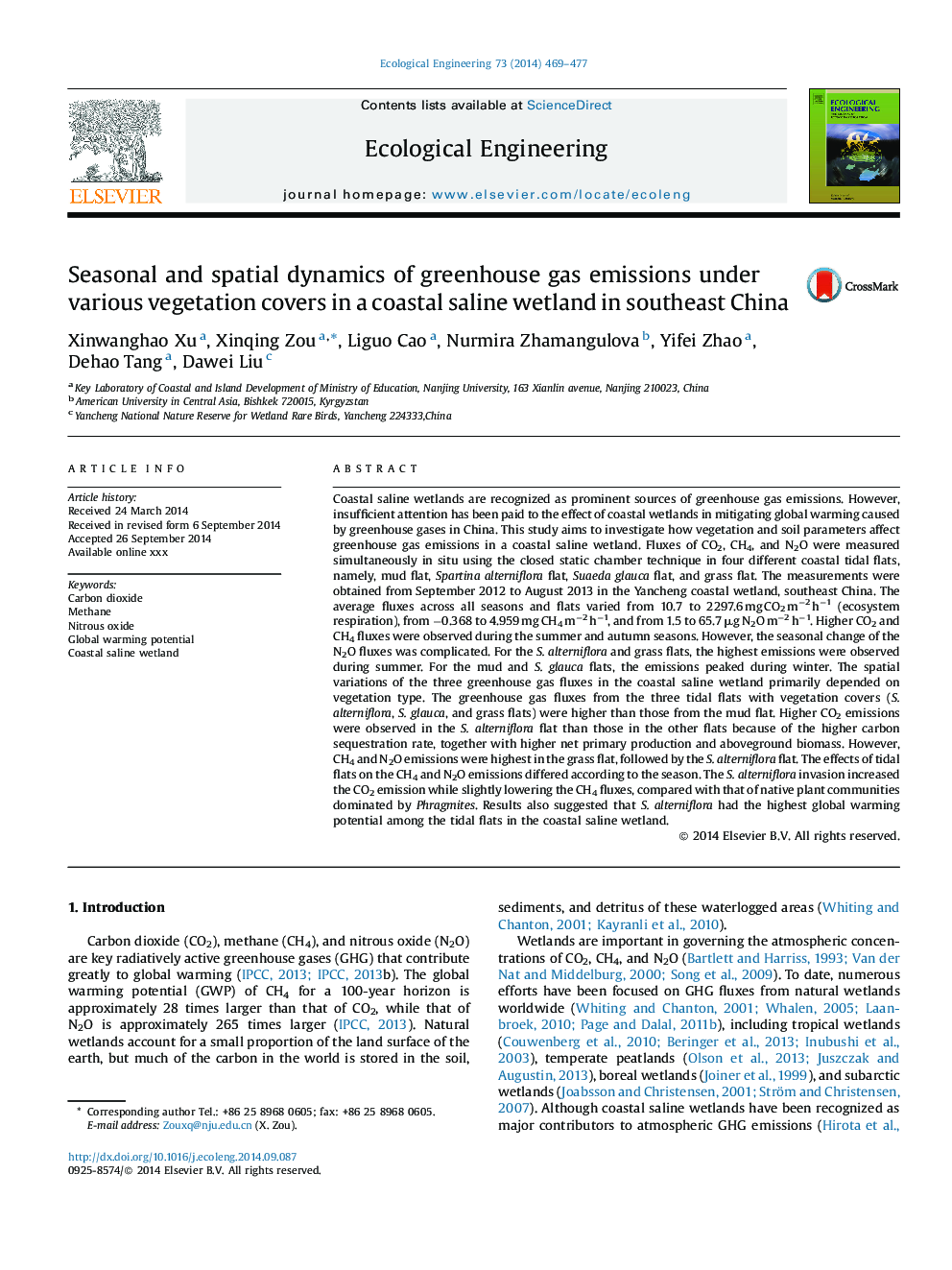| Article ID | Journal | Published Year | Pages | File Type |
|---|---|---|---|---|
| 6301980 | Ecological Engineering | 2014 | 9 Pages |
Abstract
Coastal saline wetlands are recognized as prominent sources of greenhouse gas emissions. However, insufficient attention has been paid to the effect of coastal wetlands in mitigating global warming caused by greenhouse gases in China. This study aims to investigate how vegetation and soil parameters affect greenhouse gas emissions in a coastal saline wetland. Fluxes of CO2, CH4, and N2O were measured simultaneously in situ using the closed static chamber technique in four different coastal tidal flats, namely, mud flat, Spartina alterniflora flat, Suaeda glauca flat, and grass flat. The measurements were obtained from September 2012 to August 2013 in the Yancheng coastal wetland, southeast China. The average fluxes across all seasons and flats varied from 10.7 to 2297.6 mg CO2 mâ2 hâ1 (ecosystem respiration), from â0.368 to 4.959 mg CH4 mâ2 hâ1, and from 1.5 to 65.7 μg N2O mâ2 hâ1. Higher CO2 and CH4 fluxes were observed during the summer and autumn seasons. However, the seasonal change of the N2O fluxes was complicated. For the S. alterniflora and grass flats, the highest emissions were observed during summer. For the mud and S. glauca flats, the emissions peaked during winter. The spatial variations of the three greenhouse gas fluxes in the coastal saline wetland primarily depended on vegetation type. The greenhouse gas fluxes from the three tidal flats with vegetation covers (S. alterniflora, S. glauca, and grass flats) were higher than those from the mud flat. Higher CO2 emissions were observed in the S. alterniflora flat than those in the other flats because of the higher carbon sequestration rate, together with higher net primary production and aboveground biomass. However, CH4 and N2O emissions were highest in the grass flat, followed by the S. alterniflora flat. The effects of tidal flats on the CH4 and N2O emissions differed according to the season. The S. alterniflora invasion increased the CO2 emission while slightly lowering the CH4 fluxes, compared with that of native plant communities dominated by Phragmites. Results also suggested that S. alterniflora had the highest global warming potential among the tidal flats in the coastal saline wetland.
Related Topics
Life Sciences
Agricultural and Biological Sciences
Ecology, Evolution, Behavior and Systematics
Authors
Xinwanghao Xu, Xinqing Zou, Liguo Cao, Nurmira Zhamangulova, Yifei Zhao, Dehao Tang, Dawei Liu,
